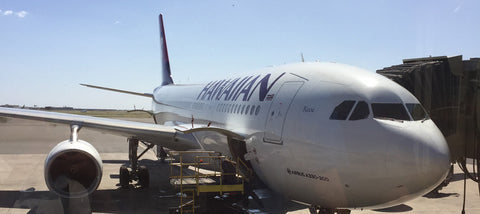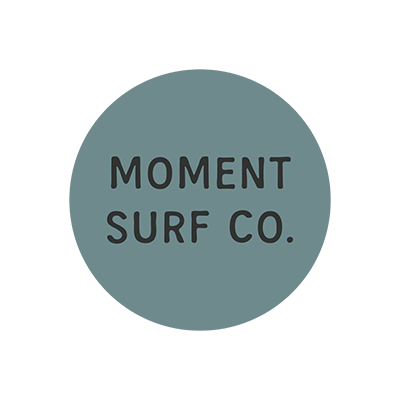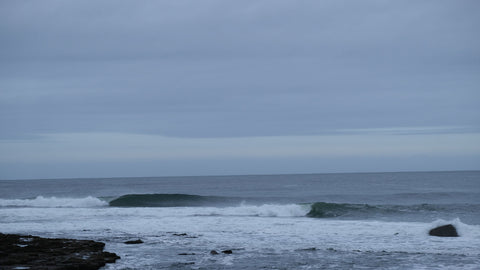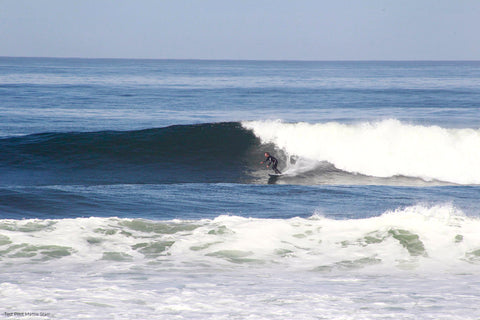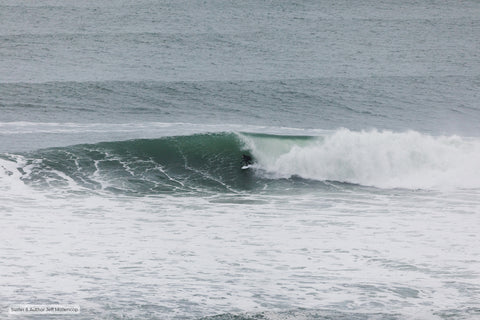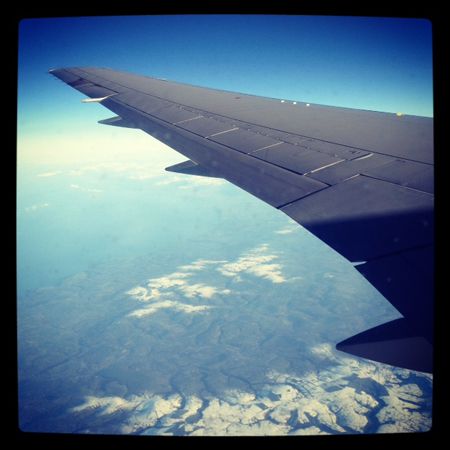
Surf Travel Tips (Part 1)
I have been fortunate enough to travel a lot in the past 8 or so years of my life, and have picked up some useful knowledge along the way that I wish I’d had 8 years ago on my first major trip (for those of you who think a “major trip” is getting in the car and driving to California for a week, we may have a different definition of the term). Below I have outlined some of the very basic things I wish I had known 8 years ago before packing up, and flying to New Zealand for 3 months.

1: Do Some Research.
The first time I went on a major trip was to New Zealand, just a short 2 months after I had turned 21. I was young, not well travelled, just had decided to take a break from college, and apparently did not understand how maps worked. Before the trip, my two friends and I had decided to do a Bike/Surf mission in New Zealand, and bike and camp our way around the country’s two beautiful islands, surfing and exploring every inch we could in three months. Luckily for me, one of my friends booked his flight a month earlier, and he ended up being our test dummy to find out what a disastrous idea that was. Not only is New Zealand a LOT bigger than it looks on your average world map (think the length of California combined with coastline surrounding, and a network of slow, windy roads that make US101 look like a speedway), but after my friend spent all day biking what would have been a 30 minute drive, only to find that the surf was crap, and it would take him 4 days to bike somewhere that would be good, we realized that might not work. Now all of this could have easily been avoided had we just taken a few moments to research what it might take to accomplish what we had envisioned, and also realized that we wanted to go on a surf trip, not a bike trip with an occasional surf. Lesson learned, I always do a bit of research before my flight.

2: Don’t Do Too Much Research!
The other extreme of the point above would be researching the crap out of your trip, and planning it down to a tea. This is as bad as or worse in my opinion than just blindly going somewhere without doing any investigating at all. Much of the fun of travel is getting yourself into crazy and interesting situations that you’d never thought you’d be in, and discovering a bit about yourself in the process. While I usually do a little reading about where I’m going, I’m careful not to go overboard. Knowing everything about your destination takes some of the awe and wonder out of actually discovering it in person. Also, not making plans of where to stay or where to be gives you limitless flexibility, and keeps you on your toes when you don’t know where you’ll be sleeping the night you step off the plane. This is also a must for the serious surf traveler. Booking a place to stay ahead is a surefire way to have that spot that’s 3 hours away fire the whole time you’re stuck surfing a 2 foot closeout.
3: Pack Light
I can’t stress this one enough. Don’t bring anything that isn’t absolutely essential. I made this mistake big time the first trip I went on. I packed a huge coffin bag with three boards, a check in luggage bag you could have fit Shaquille O’Neil in, and a backpack to carry on the plane, with everything else I thought I needed. Hey, I was going to be on the road for 3 months, I needed all that stuff right? Wrong. Not only did I not need 95% of that stuff, I also had to drag it around for a month until I finally ended up paying a fortune to ship it back home. Turns out, you don’t really need a bunch of stuff when you travel. Now, my luggage on trips will include my backpack, which is always kept small enough to carry on flights, and my boardbag. Whether I’m travelling for a week or 3 months, that’s all I need to bring. If, when you arrive at your destination you find you forgot some essential that you can’t possibly live without, well then buy it there. Also, keep it light on the clothing, a couple shirts, some fresh underwear, and a pair of shorts or two. No need to bring the closet, there are these things called laundry mats pretty much anywhere, plus you should be spending more time in your wetsuit or trunks anyway.
4: Pack All Your Surf Gear In Your Boardbag
This one seems pretty obvious but I’ll go over it anyway. Wetsuits, fins, leashes, towels, repair kits, (oh and boards!) should all be crammed, stuffed and jammed into that boardbag. Not only does this allow for some extra padding for your favorite 5’9”, but it also clutters up your boardbag enough that in case your ticket counter employee decides to check what’s in the bag (See #5), they’ll get so horrified and confused that they will take your word and keep on checking you in. When it comes to the boardbag, the more cluttered and messier it looks inside, the better.
4a: Bring Extra Surf Gear
I know this one goes against packing light, but when it comes to surf gear, it always pays dividends to pack a little extra. I found this out the hard way when I promptly broke my leash in New Zealand, and was forced to fork over $50 for something that would have cost about $23 here. My best friend learned the lesson a bit harder when we went to Europe, and he found out the 3/2 he had brought wasn’t quite warm enough for the winters over there. $650 later, he was warm, but had he purchased the same suit here at home, it would have cost him $320.

5: If Anyone Asks, You Only Have ONE Board!
Let’s face it. Most airlines are out to get you when it comes to boardbag fees. While you get charged anywhere from $50-200, the rich guy with golf clubs checking in next to you gets away with not paying at all. Seem unfair? It is. Not to mention some airlines will charge you on a per board basis. Flying internationally with United, and taking 4 boards? That’s going to run you $800 bucks. But here’s the thing; 99% of ticket counter workers don’t know much about surfboards, so when you tell them your massive coffin bag filled with 4 boards is a “surfboard”, most won’t question it. If they do, tell them there’s other stuff in there making it bulk out so much, towels, laundry, clothing, kiteboard equipment, etc., anything to make them believe you that it’s just one board. If they catch you in your lie, then you’re going to fork over some money. But you were going to do that anyway if you had told them you had 4 boards in there, and having one ticket counter person annoyed at you is worth the risk.
6: Wear Shoes While Travelling:
Don’t get me wrong, I love flip flops, and this rule can be nullified if you absolutely know your travel schedule. Have a 10 hour layover at every stop on your way to and from your destination? Well then you’re probably alright just letting your feet soak up the fresh airport air. However, if you’re going to need shoes anyway, suck it up and wear them on the flight. There is literally nothing worse than trying to sprint through an airport with flip flops knowing your flight is about to leave without you, because as great as I’m sure you think you are at running in sandals, you are much faster in shoes.


